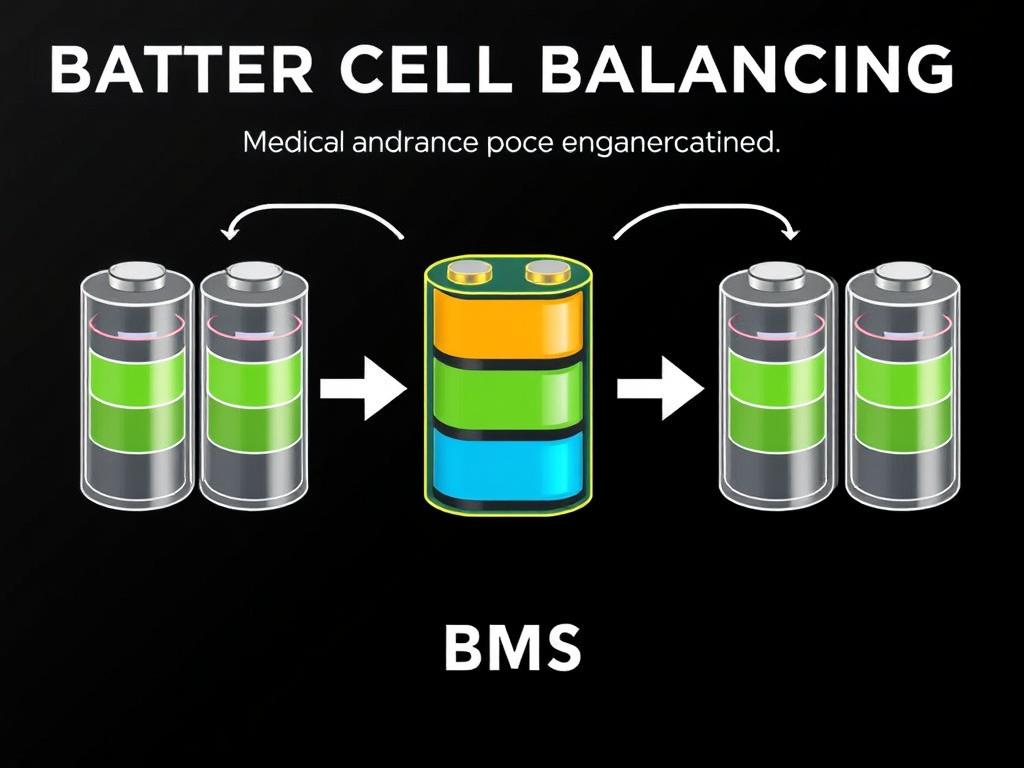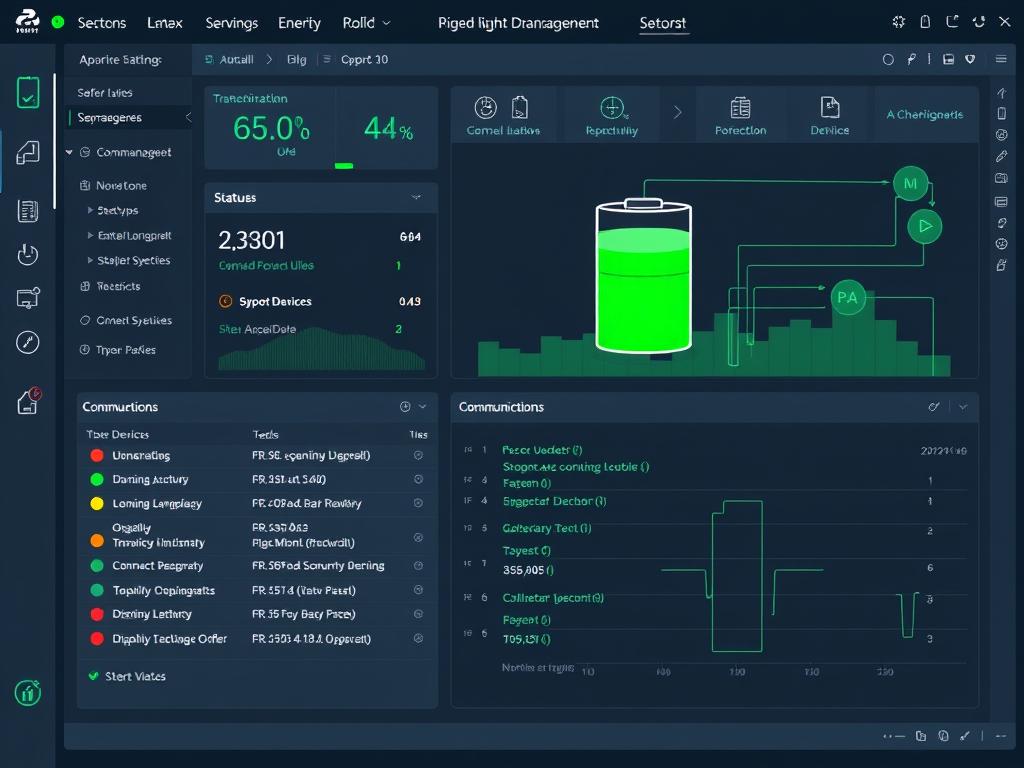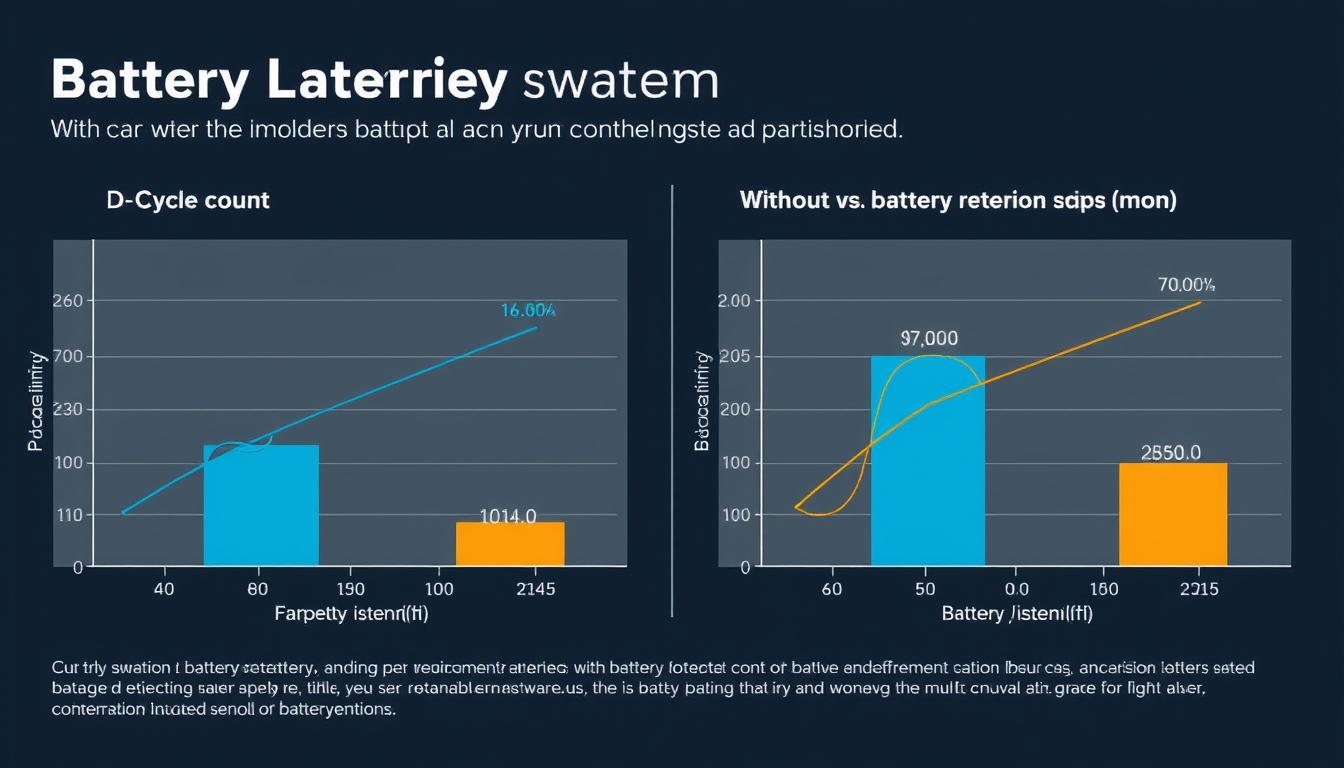
In today's world of advanced battery technologies, a critical component often works behind the scenes to ensure optimal performance and safety. A battery management system (BMS) serves as the guardian and optimizer of battery packs, from the smartphone in your pocket to electric vehicles and massive grid storage installations. This comprehensive guide explores what a BMS is, how it functions, and why it's essential for modern battery applications.

A battery management system (BMS) is an electronic system that monitors and manages rechargeable battery packs. Think of it as the brain of a battery system – constantly watching, protecting, and optimizing how batteries charge and discharge.
At its core, a BMS monitors critical parameters like voltage, current, and temperature across individual cells and the entire battery pack. It uses this information to protect batteries from operating outside their safe limits, balance cells for optimal performance, and communicate battery status to users or connected systems.
Battery management systems range from simple circuits in consumer electronics to sophisticated systems in electric vehicles and grid-scale energy storage. Their complexity scales with the application, but their fundamental purpose remains the same: maximizing battery performance while ensuring safety.

Modern battery management systems perform several critical functions that ensure safe, efficient, and reliable battery operation. Here are the five most important functions:

The BMS continuously monitors each cell's voltage, current, and temperature. It protects cells from dangerous conditions by preventing:

Over time, individual cells in a battery pack develop voltage differences. Cell balancing ensures all cells maintain similar charge levels by:

The BMS calculates critical battery states including:

Temperature significantly affects battery performance and safety. The BMS:

Modern BMS designs communicate with other systems and provide diagnostic information:
Implementing a quality battery management system delivers numerous advantages across applications. Here are seven key benefits:
By preventing harmful operating conditions and maintaining balanced cells, a BMS can significantly extend battery life. This means fewer replacements and lower lifetime costs.
Battery management systems prevent dangerous conditions like thermal runaway, which can lead to fires or explosions. This protection is especially critical for high-energy density batteries like lithium-ion.
With optimized charging and discharging profiles, batteries managed by a BMS deliver more consistent power and maintain capacity longer than unmanaged batteries.
By optimizing charging processes and minimizing energy losses, a BMS helps extract the maximum usable energy from each charge cycle, improving overall system efficiency.
Users and connected systems receive reliable information about battery status, enabling better decision-making about when to charge and how much power is available.
Preventive protection and early warning of potential issues help avoid costly battery damage and unexpected failures, reducing maintenance expenses over time.
Many battery manufacturers require proper battery management to maintain warranty coverage. A BMS ensures batteries operate within specified parameters, preserving warranty protection.

Battery management systems are essential components across numerous industries and applications. Here's how they're used in various contexts:

In electric vehicles, the BMS manages large battery packs that power the drivetrain. It ensures safe operation during rapid charging and high-power discharging while providing accurate range estimates to drivers.

Grid-scale and home energy storage systems use BMS technology to store energy from renewable sources like solar and wind. The BMS optimizes charging from variable sources and discharging during peak demand periods.

From smartphones to laptops, consumer devices rely on compact BMS designs to maximize battery life while ensuring safe operation in confined spaces and varying conditions.
Critical medical equipment requires reliable power sources. BMS technology ensures medical devices operate safely and predictably, with accurate information about remaining battery life.
Forklifts, backup power systems, and other industrial applications use battery management systems to maximize uptime, ensure safety in demanding environments, and extend the life of expensive battery investments.
Selecting the appropriate BMS for your application involves considering several key factors:
Pro Tip: When selecting a BMS, consider not just your current needs but future requirements as well. A slightly more advanced system may offer better long-term value as your application evolves.
The field of battery management is rapidly evolving. Here are some emerging trends to watch:
Advanced algorithms are improving state estimation accuracy and predictive maintenance capabilities, learning from battery behavior over time.
Eliminating wiring harnesses reduces weight, improves reliability, and simplifies manufacturing in complex battery systems.
Remote monitoring, over-the-air updates, and fleet-wide battery analytics are becoming standard features in modern BMS designs.

A BMS prevents battery fires through multiple safety mechanisms. It continuously monitors cell temperatures and voltages, immediately cutting power if dangerous conditions are detected. For lithium-ion batteries, which are susceptible to thermal runaway, the BMS prevents overcharging and over-discharging that could lead to internal cell damage. It also manages charging rates based on temperature, slowing or stopping charging in extreme conditions. Some advanced systems include physical safeguards like fuses and contactors that can physically disconnect batteries in emergency situations.
Battery management systems are typically designed for specific battery chemistries, as different battery types have unique voltage profiles, charging requirements, and safety parameters. While some BMS designs can be configured for multiple chemistries, most are optimized for a particular type like lithium-ion, lead-acid, or nickel-based batteries. When selecting a BMS, it's essential to ensure compatibility with your specific battery chemistry. Some advanced systems offer programmable parameters that can adapt to different battery types, but these usually come at a higher cost and complexity.
If a battery management system fails, the consequences depend on the failure mode and the application. In the worst case, batteries could be exposed to dangerous operating conditions like overcharging or overheating, potentially leading to reduced lifespan, permanent damage, or safety hazards. Many critical applications include redundant safety mechanisms and fail-safe designs that default to a safe state if the BMS malfunctions. For example, electric vehicles typically have multiple layers of protection beyond the primary BMS. Regular testing and maintenance of the BMS can help identify potential issues before they lead to complete system failure.
Even for small battery applications, a basic form of battery management is beneficial. Single-cell devices like smartphones incorporate simplified BMS circuits that protect against overcharging and over-discharging. For multi-cell applications, even at small scales, cell balancing becomes important to maximize battery life and performance. The complexity of the BMS can be scaled appropriately to the application size and requirements. For hobbyist projects or non-critical applications with small batteries, simple protection circuits may be sufficient, while more demanding applications benefit from more comprehensive management features.
As battery technology continues to power more aspects of our lives, battery management systems play an increasingly vital role in ensuring these energy storage solutions are safe, efficient, and long-lasting. From extending battery life to preventing dangerous failures, a well-designed BMS delivers value far beyond its cost.
Whether you're designing an electric vehicle, deploying renewable energy storage, or simply wanting to understand how your devices work, appreciating the importance of battery management systems helps explain why modern batteries perform so much better than their predecessors.
As battery technologies evolve, so too will the management systems that protect and optimize them, continuing to push the boundaries of what's possible in our increasingly battery-powered world.
Want to learn more about implementing the right battery management system for your specific application? Our comprehensive guide covers everything from selection criteria to implementation best practices.
Download Free BMS Selection Guide